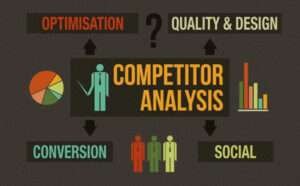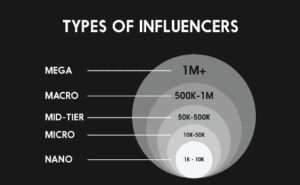
Search Engine Optimization (SEO) has transformed significantly since its inception, evolving from a rudimentary practice into a sophisticated, multifaceted discipline. The journey of SEO reflects the broader evolution of the internet and search engines themselves. This comprehensive exploration traces the historical development of SEO, highlighting key milestones, technological advancements, and shifts in strategies that have shaped the field.
The Early Days: Pre-SEO Era (1990s)
1. The Birth of Search Engines
The concept of search engines dates back to the early 1990s. Early search engines like Archie (1990) and Veronica (1992) were designed to index and retrieve files from FTP sites and Gopher servers. These early tools were rudimentary compared to today’s standards, focusing primarily on keyword matching rather than sophisticated algorithms.
2. The Emergence of Web Directories
In the mid-1990s, web directories like Yahoo! Directory (1994) and DMOZ (1998) gained prominence. These directories were human-curated lists of websites categorized by topic. Websites were submitted to these directories, and inclusion was based on relevance and quality, albeit with a more manual and subjective approach.
3. The Advent of Basic Search Engines
The late 1990s saw the rise of more advanced search engines like AltaVista (1995), Lycos (1994), and Inktomi (1996). These engines introduced basic algorithms that ranked pages based on keyword frequency and relevance. This period marked the beginning of early SEO practices, where website owners started optimizing their pages by stuffing keywords and creating meta tags to improve visibility in search results.
The Early SEO Techniques (1990s - Early 2000s)
1. Keyword Stuffing and Meta Tags
As search engines became more popular, keyword stuffing—repeatedly using keywords in web content—emerged as a common SEO tactic. Meta tags, such as the meta description and meta keywords tags, were also used to influence search engine rankings. However, these practices were often exploited, leading to low-quality content that prioritized keyword density over user experience.
2. The Birth of Google
In 1998, Google was founded by Larry Page and Sergey Brin, introducing a revolutionary algorithm called PageRank. PageRank evaluated the quality of web pages based on the number and quality of links pointing to them. This algorithm shifted the focus from mere keyword matching to the significance and authority of web pages, laying the groundwork for modern SEO.
3. The Rise of Link Building
The introduction of PageRank emphasized the importance of backlinks—links from other websites—as a key factor in determining a site’s authority and relevance. This period saw the rise of link-building strategies, where website owners sought to acquire links from reputable sites to improve their search rankings. However, link schemes and unethical practices also emerged, leading to search engines needing to refine their algorithms.
The Evolution of SEO Strategies (Early 2000s - 2010s)
1. The Age of Algorithm Updates
Google’s continuous algorithm updates, such as the Florida update (2003) and the introduction of the first major Panda update (2011), revolutionized SEO strategies. These updates aimed to combat spammy practices, such as keyword stuffing and low-quality content, by rewarding sites with high-quality, relevant content and penalizing those that engaged in manipulative tactics.
2. The Emergence of Content Marketing
As search engines became more sophisticated, content quality and relevance became critical factors in SEO. The focus shifted from simply optimizing for keywords to creating valuable, informative content that met users’ needs. This era saw the rise of content marketing strategies, where businesses invested in high-quality articles, blog posts, and multimedia content to attract and engage their audience.
3. The Rise of Social Media and Local SEO
The mid-2000s saw the integration of social media into SEO strategies. Platforms like Facebook, Twitter, and LinkedIn became important for driving traffic and building brand authority. Additionally, the rise of mobile usage and local searches led to the growth of local SEO, where businesses optimized their online presence to appear in local search results and Google Maps.
4. The Mobile Revolution
The advent of smartphones and tablets in the early 2010s brought a new dimension to SEO. Google’s mobile-first indexing and the emphasis on mobile-friendliness became critical factors for search rankings. Websites needed to adapt their design and functionality to ensure a seamless user experience across various devices.
The Modern Era of SEO (2010s - Present)
1. The Era of User Experience (UX)
In recent years, SEO has evolved to focus increasingly on user experience (UX). Google’s algorithms now consider factors such as page load speed, mobile responsiveness, and user engagement metrics (e.g., bounce rate and time on site). The emphasis on UX aims to ensure that users have a positive experience and find relevant information quickly.
2. The Impact of Voice Search and AI
The rise of voice search technology, powered by virtual assistants like Google Assistant, Siri, and Alexa, has influenced SEO practices. Optimizing for voice search requires a focus on natural language processing and conversational queries. Additionally, artificial intelligence (AI) and machine learning have become integral to search algorithms, allowing for more sophisticated understanding of user intent and context.
3. The Growth of Structured Data and Rich Snippets
Structured data and schema markup have gained importance in SEO, allowing search engines to better understand the content and context of web pages. This has led to the growth of rich snippets and enhanced search results, such as featured snippets, knowledge panels, and local packs, which provide users with more detailed and relevant information directly on the search results page.
4. The Emphasis on E-A-T (Expertise, Authoritativeness, Trustworthiness)
Google’s focus on E-A-T (Expertise, Authoritativeness, and Trustworthiness) has become a critical component of SEO, especially for YMYL (Your Money or Your Life) sites. Websites that provide medical, financial, or legal advice must demonstrate a high level of expertise and credibility. This emphasis reflects a broader trend towards prioritizing high-quality, authoritative content in search rankings.
5. The Rise of Video and Visual Content
Video content has become a significant factor in SEO, with platforms like YouTube offering opportunities for driving traffic and engagement. Video SEO involves optimizing video titles, descriptions, and tags, as well as ensuring that videos are accessible and relevant to user queries. Visual content, including images and infographics, also plays a role in SEO, as search engines increasingly value multimedia content that enhances user experience.
The Future of SEO: Emerging Trends and Innovations
1. The Integration of Augmented Reality (AR) and Virtual Reality (VR)
As AR and VR technologies become more mainstream, they are expected to influence SEO strategies. Enhanced visual experiences and interactive content could become crucial for engaging users and improving search visibility. Optimizing AR and VR content for search engines will likely involve new techniques and approaches.
2. The Role of Blockchain Technology
Blockchain technology may impact SEO by enhancing transparency and trust in digital advertising and content management. Smart contracts and decentralized networks could provide new ways for verifying content authenticity and securing digital interactions, potentially influencing search engine practices.
3. The Evolution of Search Algorithms
Search algorithms will continue to evolve, incorporating advancements in AI, machine learning, and natural language processing. Future updates may focus on deeper contextual understanding, personalization, and improved user intent recognition, further shaping SEO practices.
4. The Growing Importance of Privacy and Data Security
As privacy regulations and data security concerns increase, SEO practices will need to adapt to comply with new standards. Ensuring that websites are secure, transparent, and compliant with privacy laws will be essential for maintaining search rankings and user trust.
Conclusion
The evolution of SEO reflects the broader transformation of the internet and search technologies. From its early days of keyword stuffing and basic algorithms to the sophisticated, user-centric practices of today, SEO has continually adapted to meet changing technologies and user expectations. Understanding the historical development of SEO provides valuable insights into its current practices and future directions, highlighting the importance of staying informed and agile in the ever-changing landscape of digital marketing. As search engines and user behaviors continue to evolve, SEO will remain a dynamic and essential component of successful web strategies.
















































